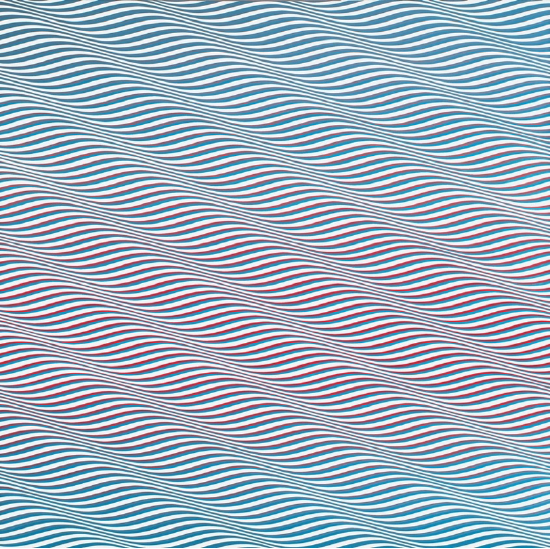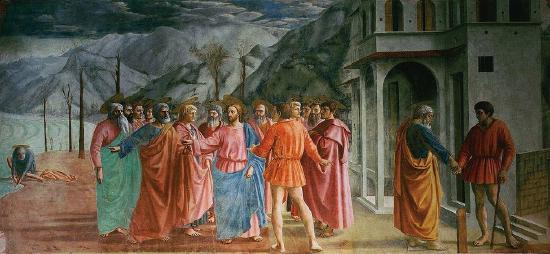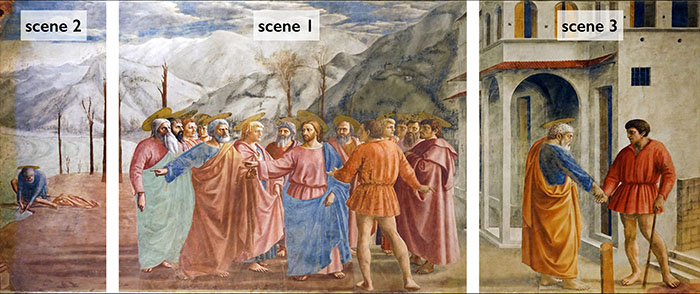3.6: Principles of Design- Motion and Time
- Page ID
- 156862
Overview
Motion is a principle of art. It is a tool that artists use to organize the artistic elements in a work; it is employed in both static and time-based mediums.
Introduction to Motion and Time
- Motion, a principle of art, is a tool artists use to organize the artistic elements in a work; it is employed in both static and time-based mediums.
- Most traditional art media (e.g. painting) are static, but artists have found ways to indicate the passage of time and the appearance of motion
- New technology and media, such as film and video, allow artists to capture motion and time
- Artists can communicate motion by implying time or creating the illusion of it 1
Implied Motion
- Implied motion is used in static works of art. Visual clues tell us that the work portrays motion, but we do not actually see the motion happening.
- In Bernini's Apollo and Daphne, the sun god Apollo falls madly in love with the wood nymph Daphne. As she runs away terrified, her father saves her by transforming her into a bay laurel tree.
- In this sculpture, diagonal lines convey the action. This moment is frozen in time. 1

Gianlorenzo Bernini, Apollo and Daphne, 1622–24. Carrara marble, height 8'. Galleria Borghese, Rome, ItalyArtists create an illusion of motion through visual tricks. "Gianlorenzo Bernini. Apollo e Dafne, 1625." by Su Burning is licensed under CC BY-NC-ND 2.0.
- Giacomo Balla was a member of the Italian Futurists—artists obsessed with the increasing speed and industrialization of the modern world.
- In this painting of a black dachshund walking with a woman in dark shoes and dress, Giacomo Balla was exploring a new field of technology—chronophotography: a photograph or a series of photographs of a moving object taken to record and exhibit successive phases of the object's motion. 2
- A series of repeating marks in the dog’s tail, feet, and leash communicate rapid movement 1

Giacomo Balla, Dynamism of a Dog on a Leash, 1912. Oil on canvas, 35⅜ × 43¼". Albright-Knox Art Gallery, Buffalo, New York. Licenced by Gateways to Art: Understanding the Visual Arts, Copyright © 2015 Thames & Hudson
Optical Art
- An abstract style, also known as Optical Art, developed in the 1960s and featuring geometric shapes and lines in black and white or vivid colors. Based in theories of color and perception, Op Art compositions often create optical illusions of vibration or depth. 3
- British artist Bridget Riley (b. 1931) was part of the Op art movement
- Cataract 3, 1967 is an example of Op art (Optical art)
- If we focus on a single point in the work, the image appears to vibrate

Bridget Riley, Cataract 3, 1967. PVA on canvas, 7'3¾" × 7'3¾". British Council Collection. Licenced by Gateways to Art: Understanding the Visual Arts, Copyright © 2015 Thames & Hudson
Actual Movement
- We see actual motion in artworks that change in real space and time
- Examples include kinetic art (a work that contains moving parts) and performance art
- In performance art, the artist’s intention is to create an experience rather than an art object
- Alexander Calder's Untitled. 1976 is an example of kinetic art; art that moves or at least seems to move
- It is composed of 13 panels and 12 arms that spin around their points of balance, mobiles like the one in the east building of the national gallery of art are designed to create a sense of virtual volume as they turn on the air currents in the room in the manner of a dancer moving through the space of a stage. 1
Time
- Any artwork that deals with events must show how time goes by
- Artists find ways to communicate the passage of time and remind us of its influence 1
The Passage of Time in Massaccio's The Tribute Money
- Artists often seek to tell a story. This can be in a single painting
- The Tribute Money is one of many frescos painted by Masaccio in the Brancacci chapel.
- All of the frescos tell the story of the life of St. Peter (considered to be the first Pope).
- The story of the Tribute Money is told in three separate scenes within the same fresco
- This way of telling an entire story in one painting is called a continuous narrative 4

Masaccio,Tribute Money, 1427, fresco (Brancacci Chapel, Santa Maria del Carmine, Florence)

Masaccio, Tribute Money, 1427, fresco (Brancacci Chapel, Santa Maria del Carmine, Florence) (photo: Steven Zucker, CC BY-NC-SA 2.0)
- In the center of the fresco (scene 1), we see the tax collector demanding the money, and Christ instructing Peter.
- On the far left (scene 2), we see Peter kneeling down and retrieving the money from the mouth of a fish
- and on the far right (scene 3), St. Peter pays the tax collector.
- In the fresco, the tax collector appears twice, and St. Peter appears three times (you can find them easily if you look for their clothing). 4
Summary
- Motion, a principle of art, is a tool artists use to organize the artistic elements in a work; it is employed in both static and time-based mediums.
- Artists use implied and actual movement in their artworks.
Sources
- Debra J. DeWitte, Ralph M. Larmann, and M. Kathryn Shields. Gateways to Art: Understanding the Visual Arts, Third Edition.
- Reed Enger, "Dynamism of a Dog on a Leash," in Obelisk Art History, Published September 11, 2017; last modified May 19, 2020, arthistoryproject.com/artists/giacomo-balla/dynamism-of-a-dog-on-a-leash/.
- Modern Art Museum. Op Art. www.moma.org/collection/terms/op-art
- Khan Academy. Masaccio, The Tribute Money in the Brancacci Chapel. https://www.khanacademy.org/humaniti...ancacci-chapel

